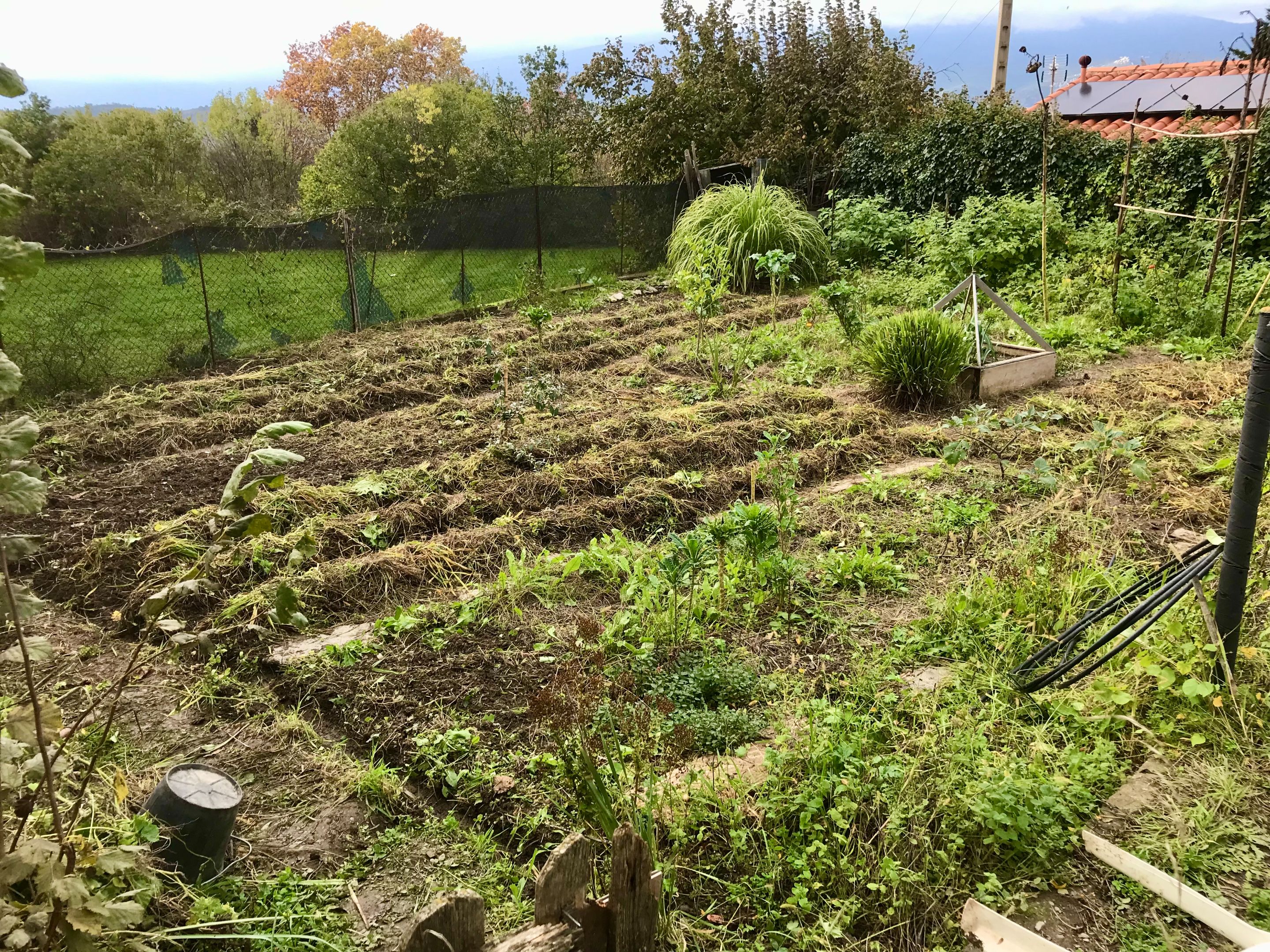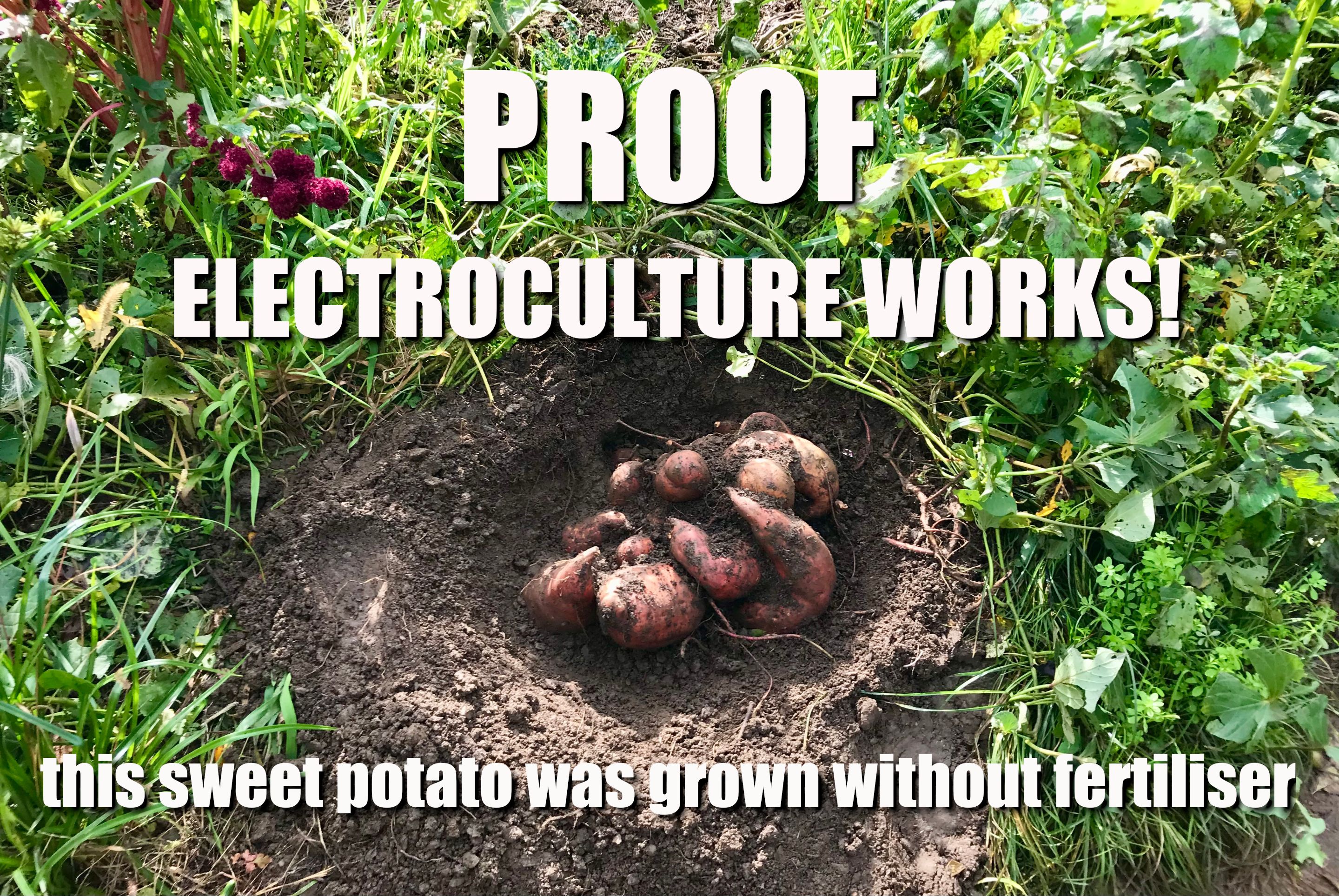
It has been some time since i had good reason to post in the electroculture community, busy growing our homestead and dreaming of new horizons, but when i dug up this sweet potato yesterday i simply had to stop and write an article, as what this represents is categoric proof of electroculture's effectiveness because you cannot make sweet potatoes grow this big without fertiliser. Even with fertiliser i would argue it is not possible to grow them this big here in the South of France if you don't have electroculture because i have never seen anything which even comes close to the size this in our local markets.
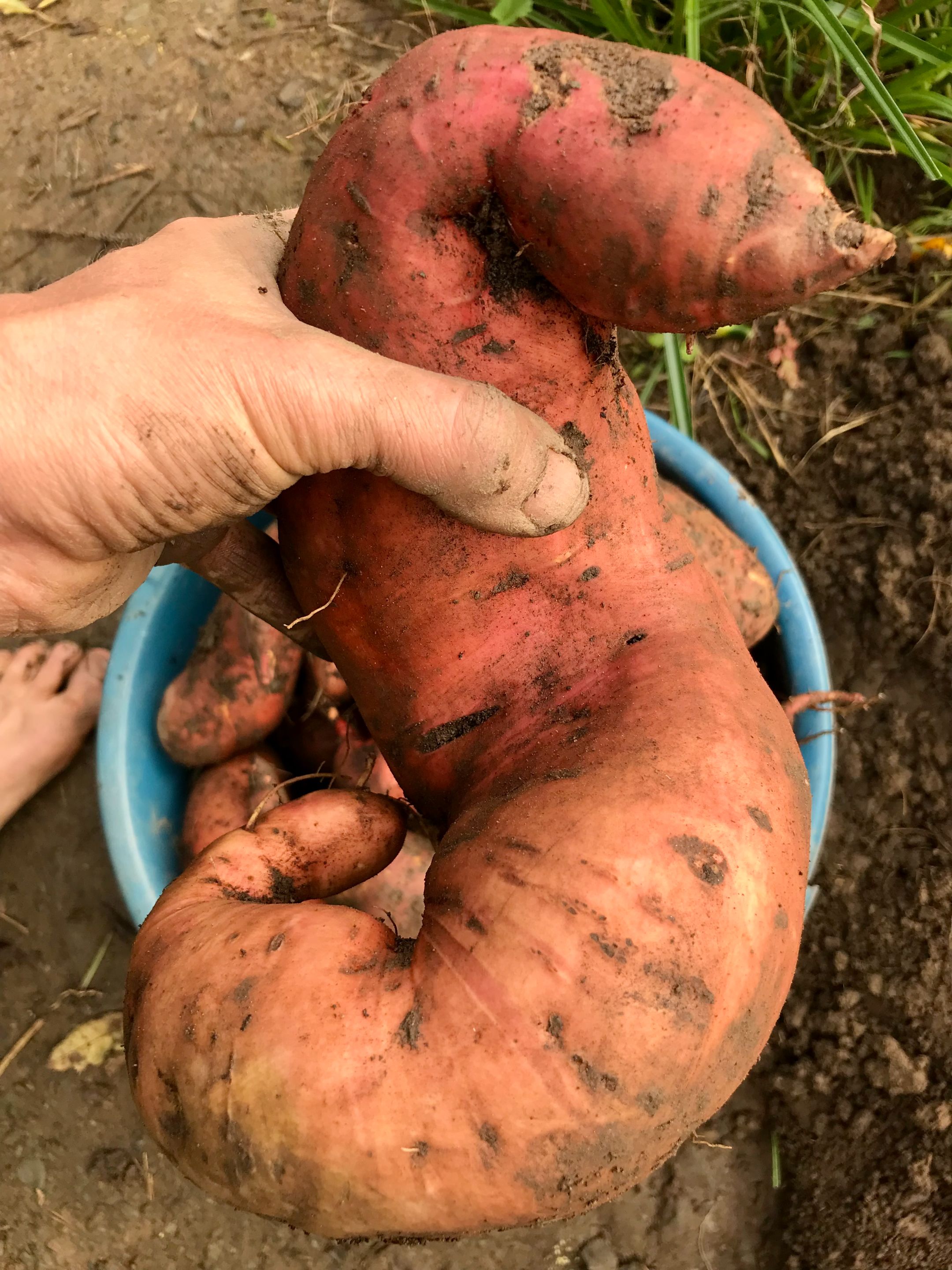
Here is the section of the garden in which the sweet potato was grown, seen earlier this year.

And here is the main electroculture device being used in this section, a home made antenna at the base of which were many amazing plants, most notably these red amaranth.
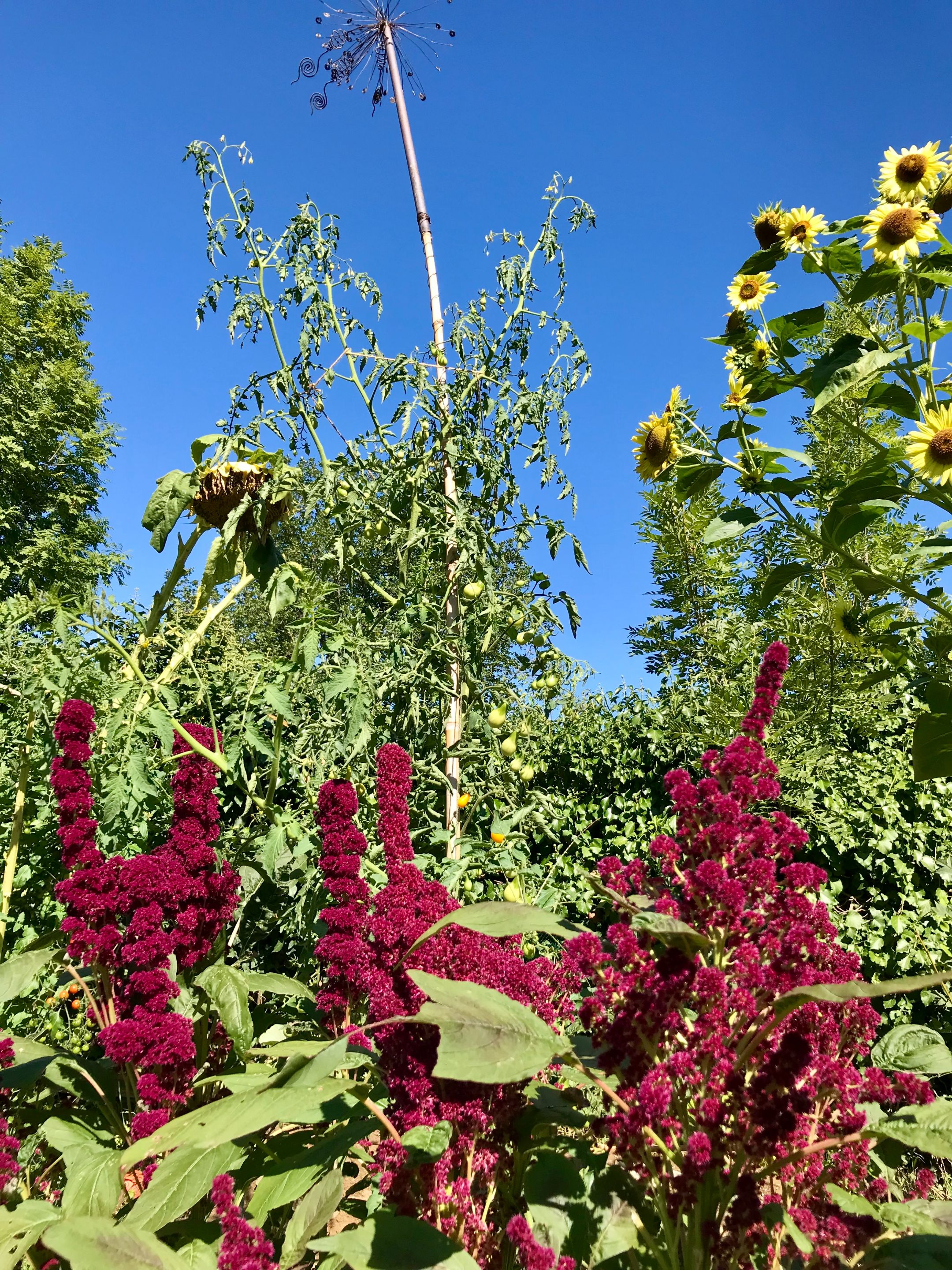
The same section of the garden seen yesterday before i dug up the sweet potato which has covered the entirety of this bed with around 8 meters of foliage, growing south towards the sun.
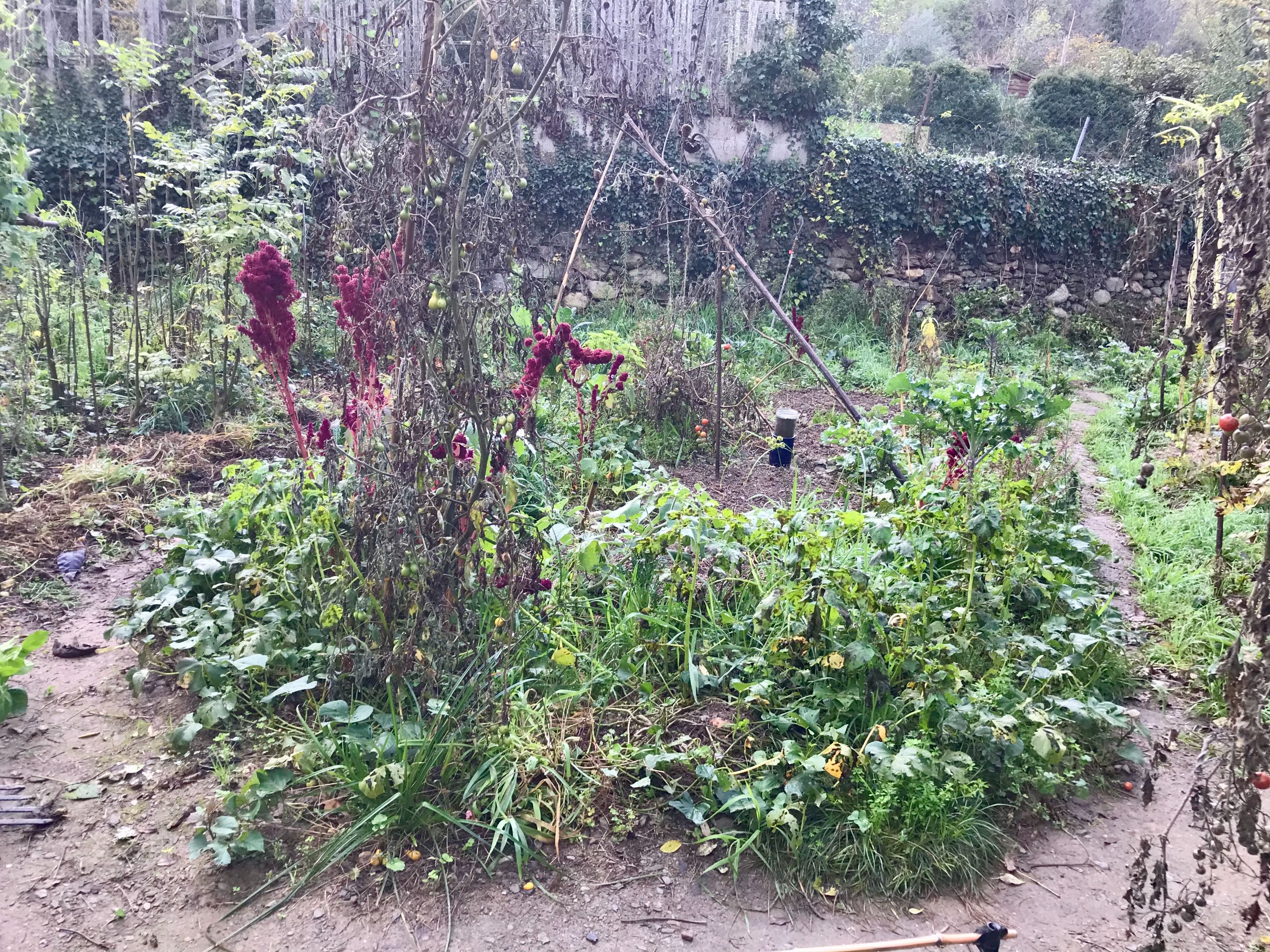
Worth mentioning that i am also using two other electroculture techniques in this bed:
There is a magnetised steel cable in the middle, around 50cms deep running north/south with ring magnets at the south end. Plus i planted the baby sweet potato in the Spring with some powdered basalt mixed into the soil.
But no fertiliser was used at any point as we didn't have rabbits at that time.
Yet what i see before me today is a product which would make even the most proficient producers of sweet potato gasp at the size and want to know how i did it.
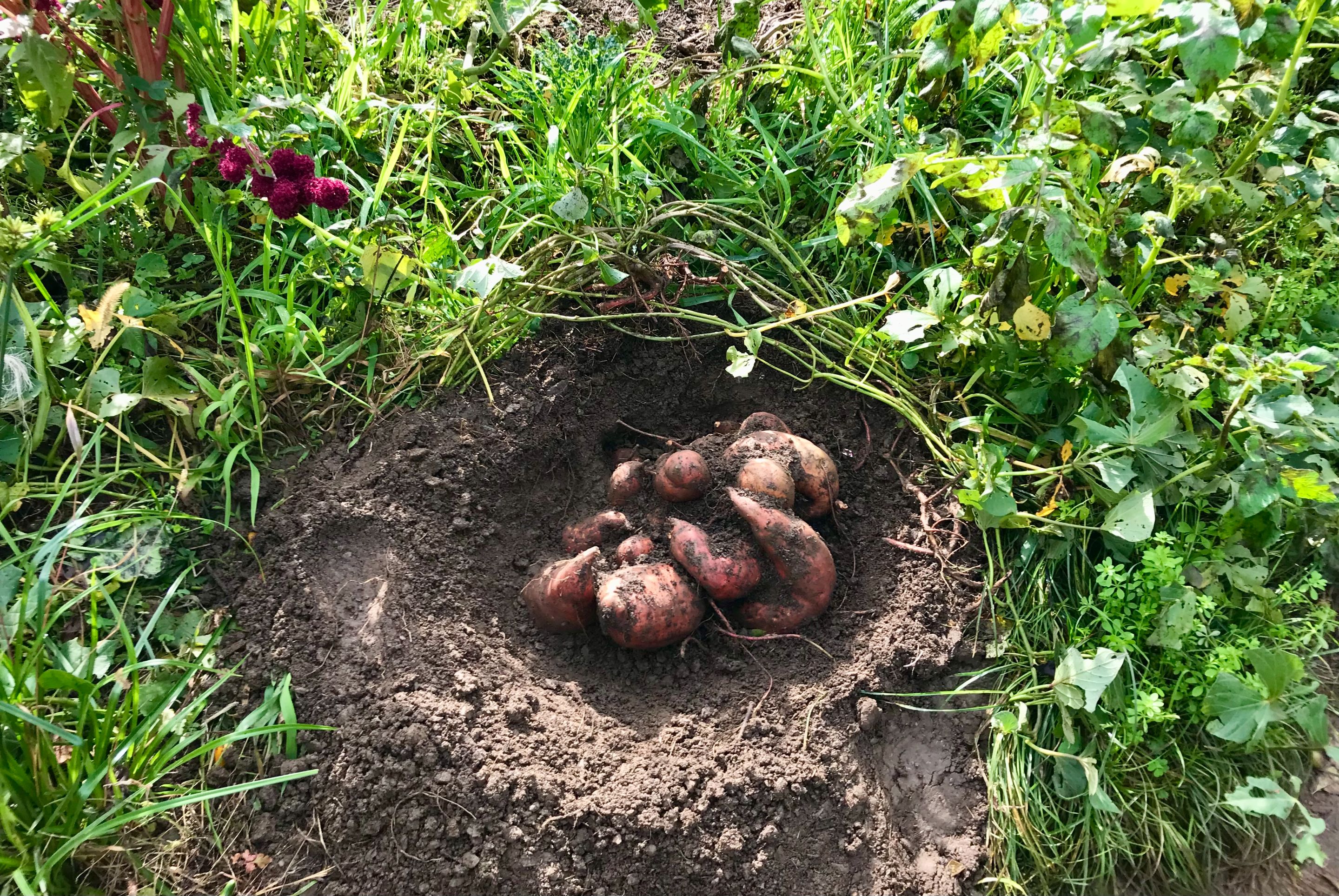
Here you can see the proximity of the antenna, perhaps 60cms away.
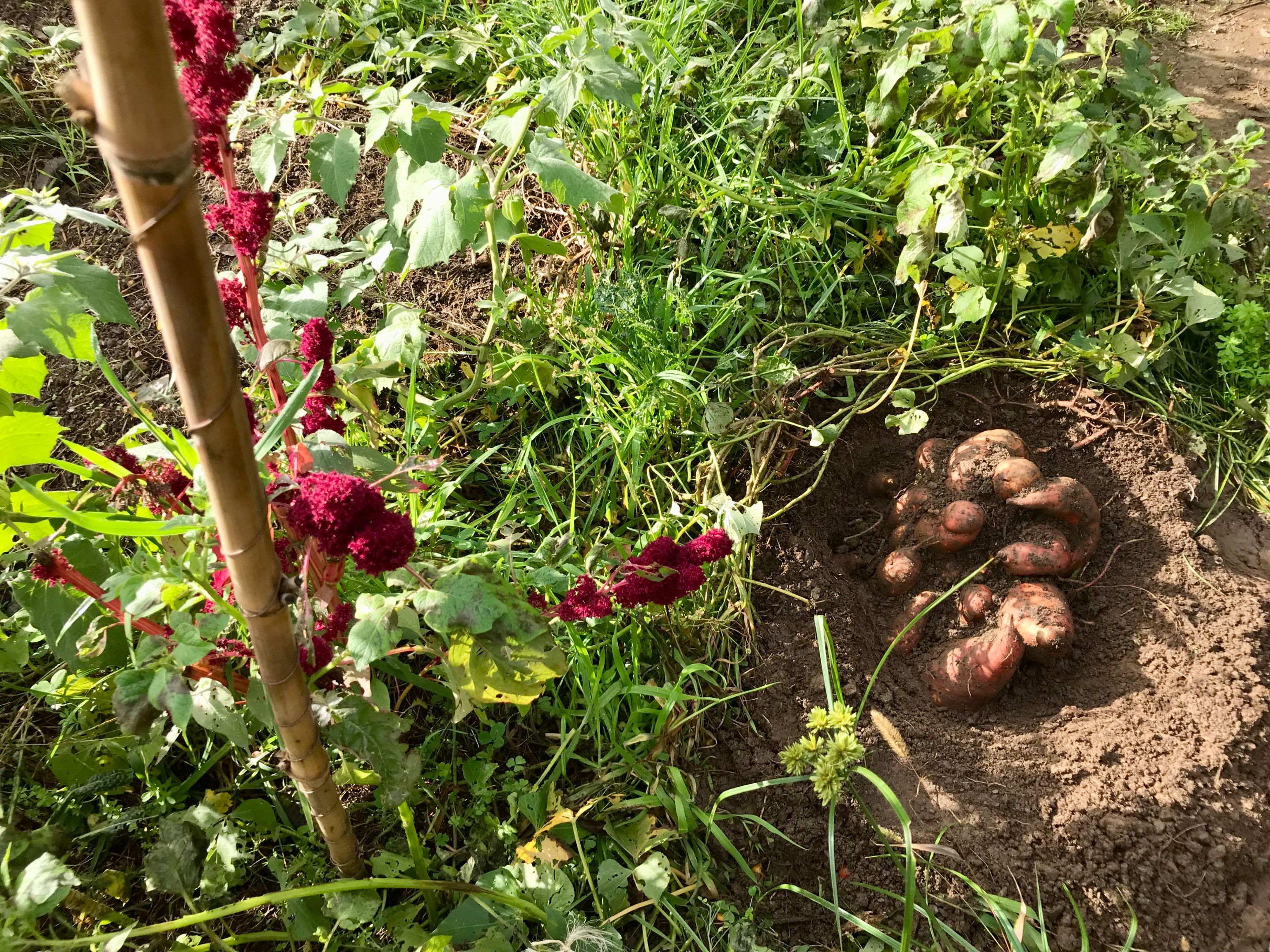
I put my hand in this shot so you can get an idea for size and the incredible beauty of what appears to be a sculpted piece of art, excavated from the dirt like something ancient.

My tape measure has been outside for too long and no longer looks its best but you can just about see the cluster is almost 40cms/15inches in length.
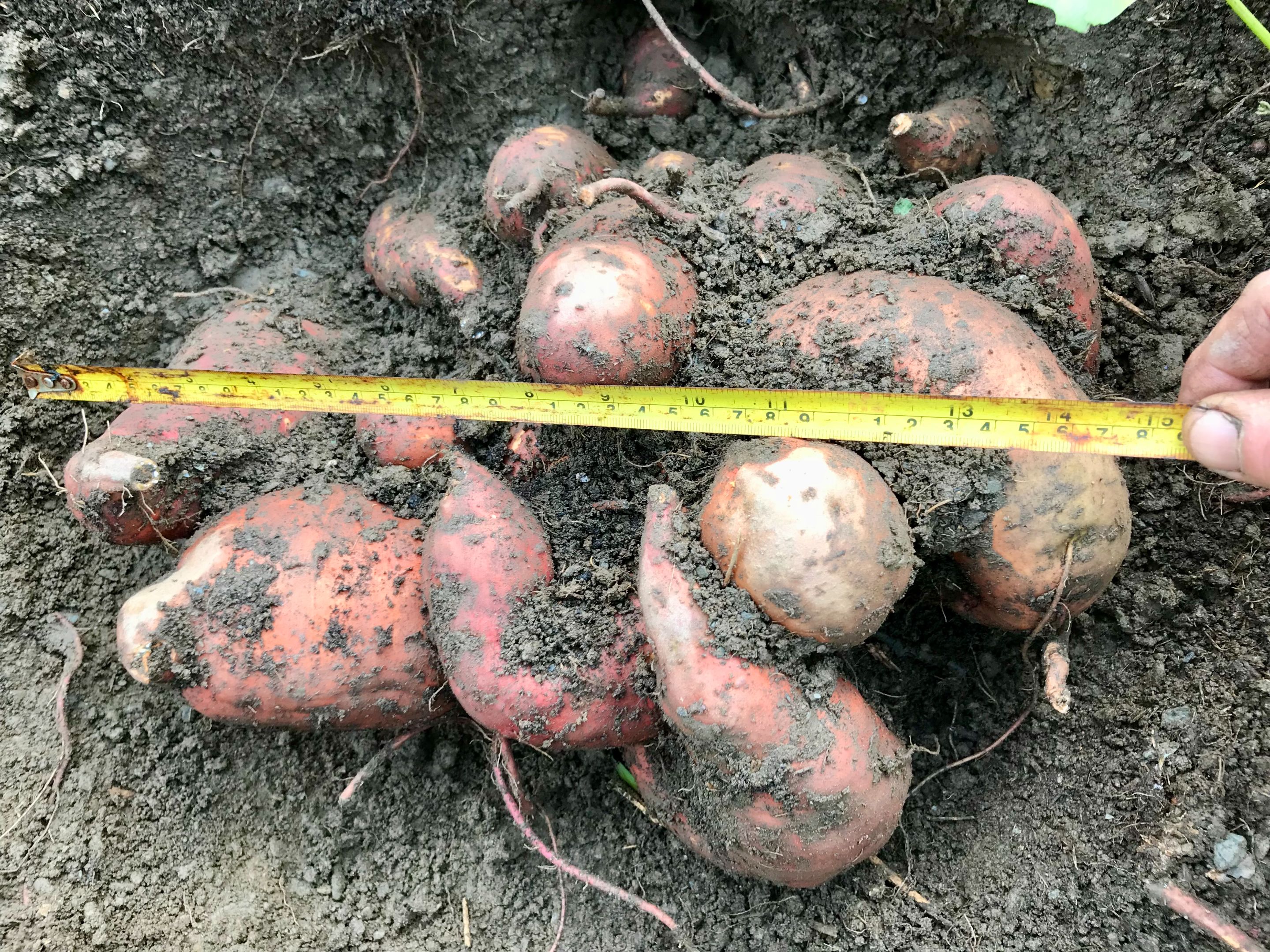
This guy reminds me of a giant worm!

I never personally seen sweet potatoes this big before. Have you?
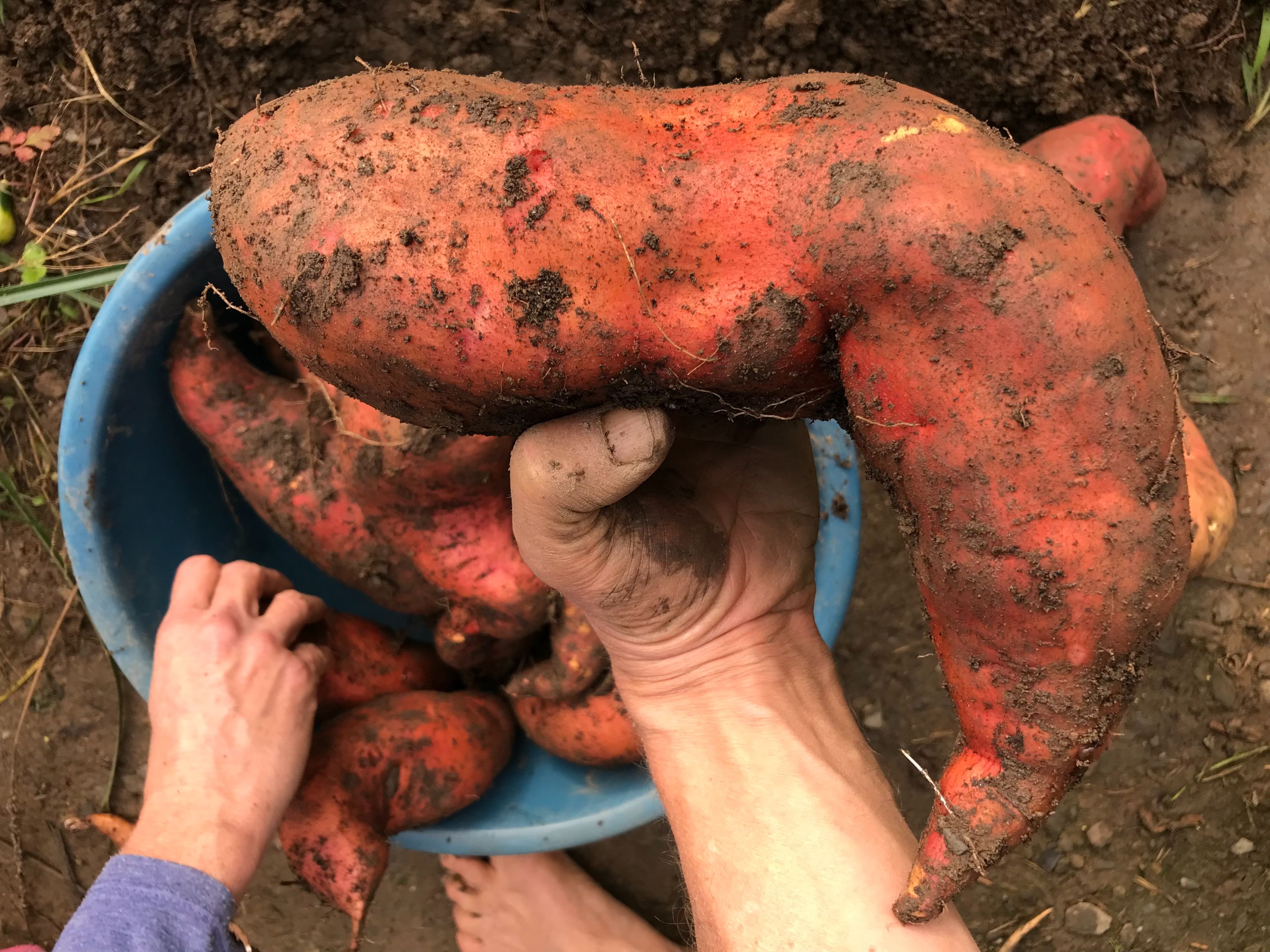
This one looks like a beet of some kind.
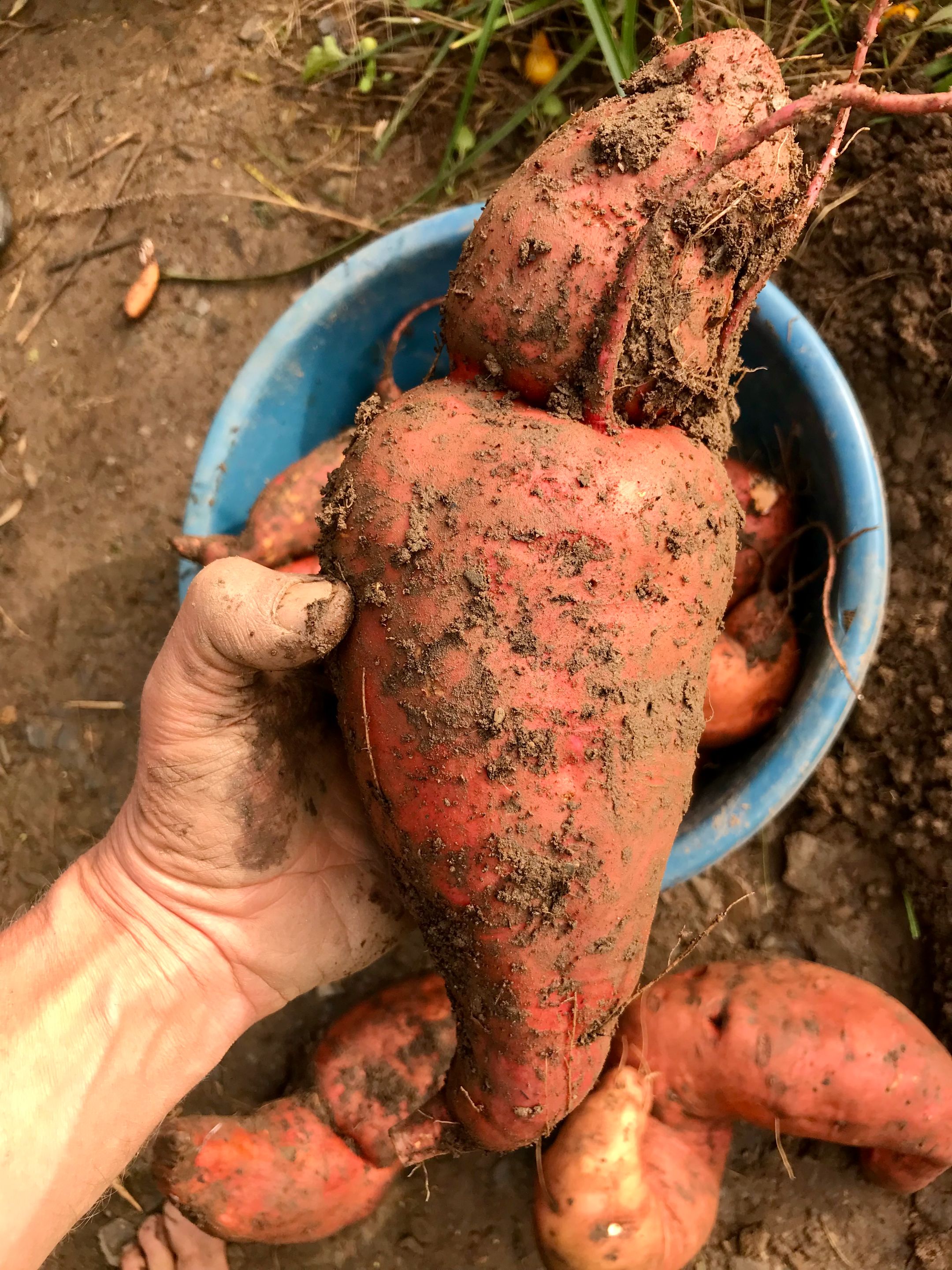
Sabrina brushed the dirt off a little, being sure not to remove too much, as dirty is the way they should be stored if you want them to last the winter.
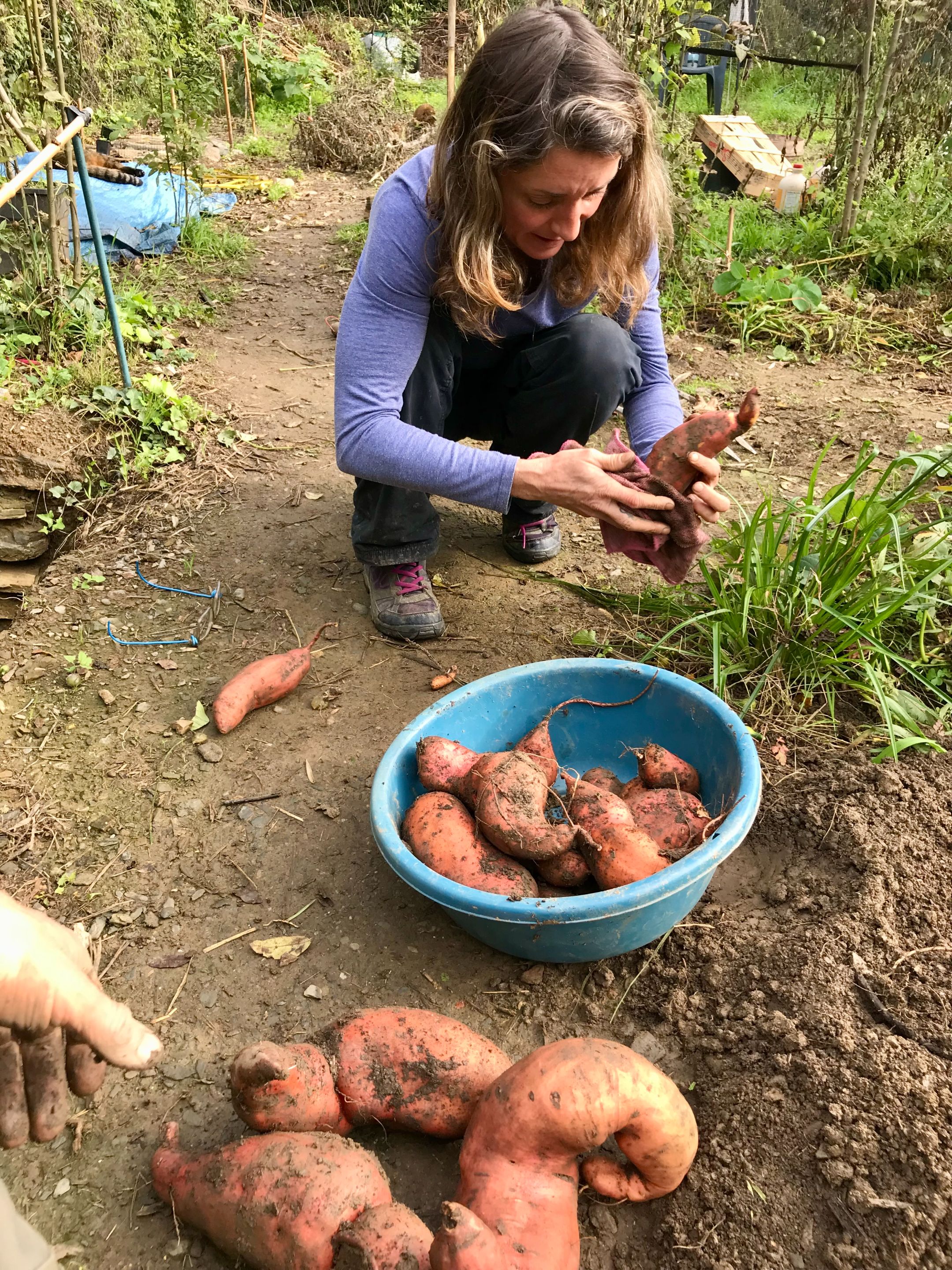
Here you can see all the individual tubers from the single plant. Enough to feed my family for around 2 months i would say.

So there really can be no argument. Why grow ten small plants to achieve this quantity when all you need is one plant and an antenna? Less land is required, less watering, less fertiliser and less maintenance.
Plus i've read enough studies now to know that all vegetables grown with electroculture have a higher nutrition content than those grown without it.
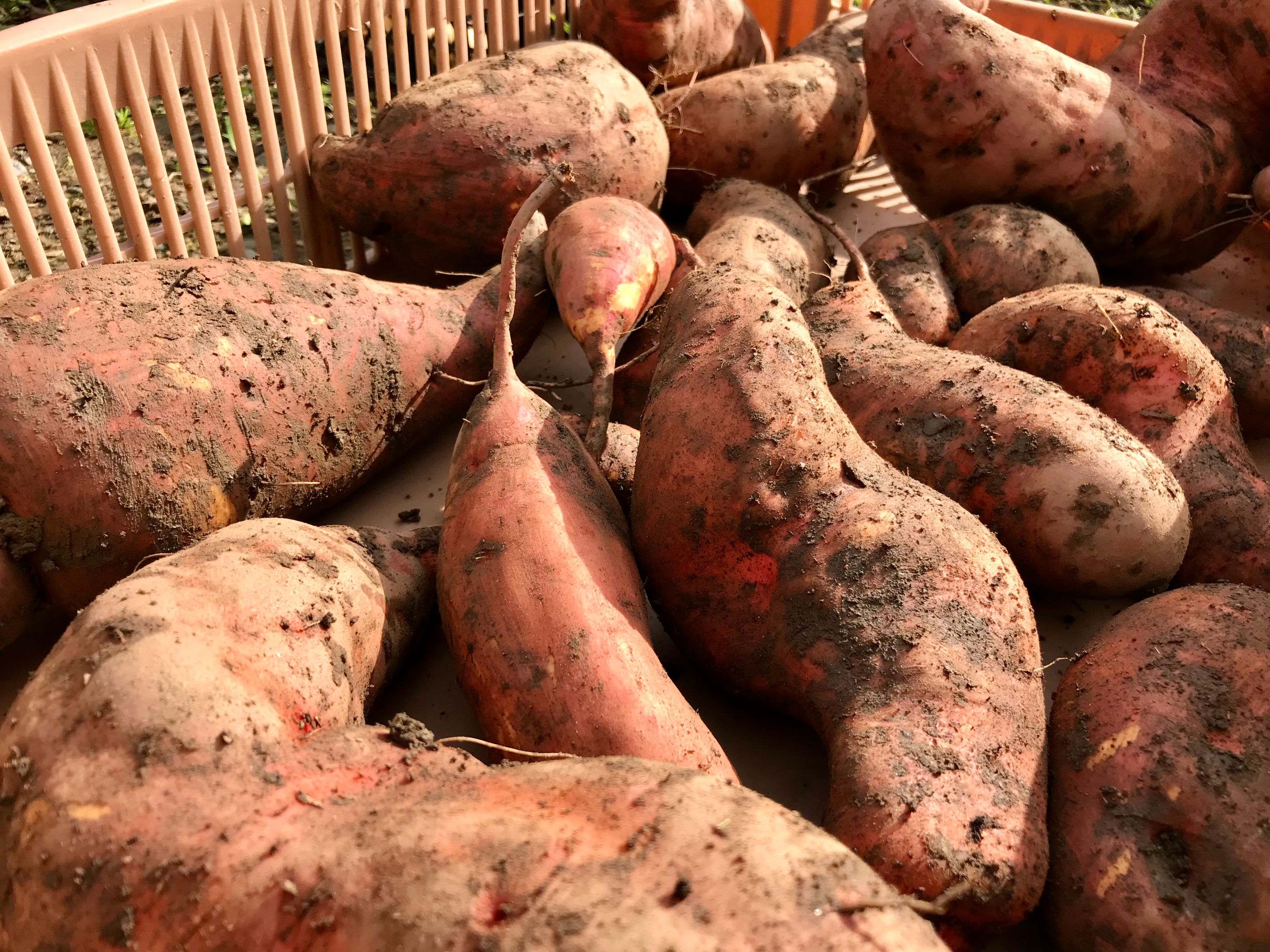
I planted classic potatoes in the same bed in early Spring before i planted the sweet potato so was able to harvest some of them at the same time, digging around in an area no bigger than a meter squared, exactly where the sweet potato was.
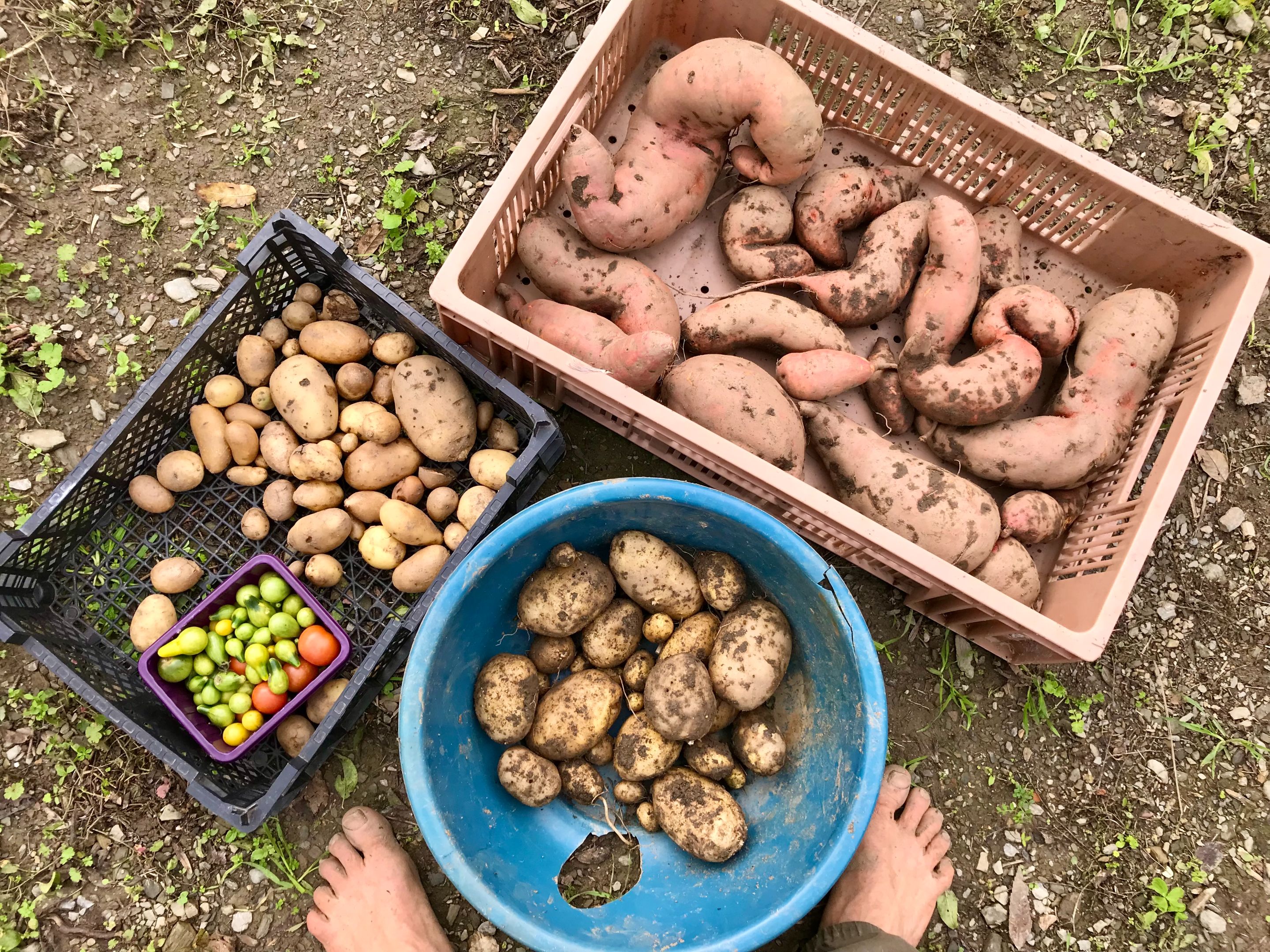
Pretty amazing what can be achieved in such a small space right?
Especially given that i have been harvesting amaranth flower, yellow pear tomatoes, basil & sorrel from this same space for the last four months.
Speaking from experience
As i enter now into my third year of experiments in electroculture i can tell you with certainty these copper wire antenna are the most effective and beautiful tools you can use in your garden to boost growth. Sure, basalt is simple and effective too but it doesn't stand proud above your land letting everyone know you are a user of electroculture, tempting and daring them to try it themselves.
The antenna below is nothing more than a simple bamboo stick with copper wire twisted clockwise from the top to the bottom, yet it is still visibly effective like its big brothers. All the other beetroot (which don't have their own personal antenna) have leaves which are turning purple as one would expect at this time of year, signalling an end to their growth. But not these.
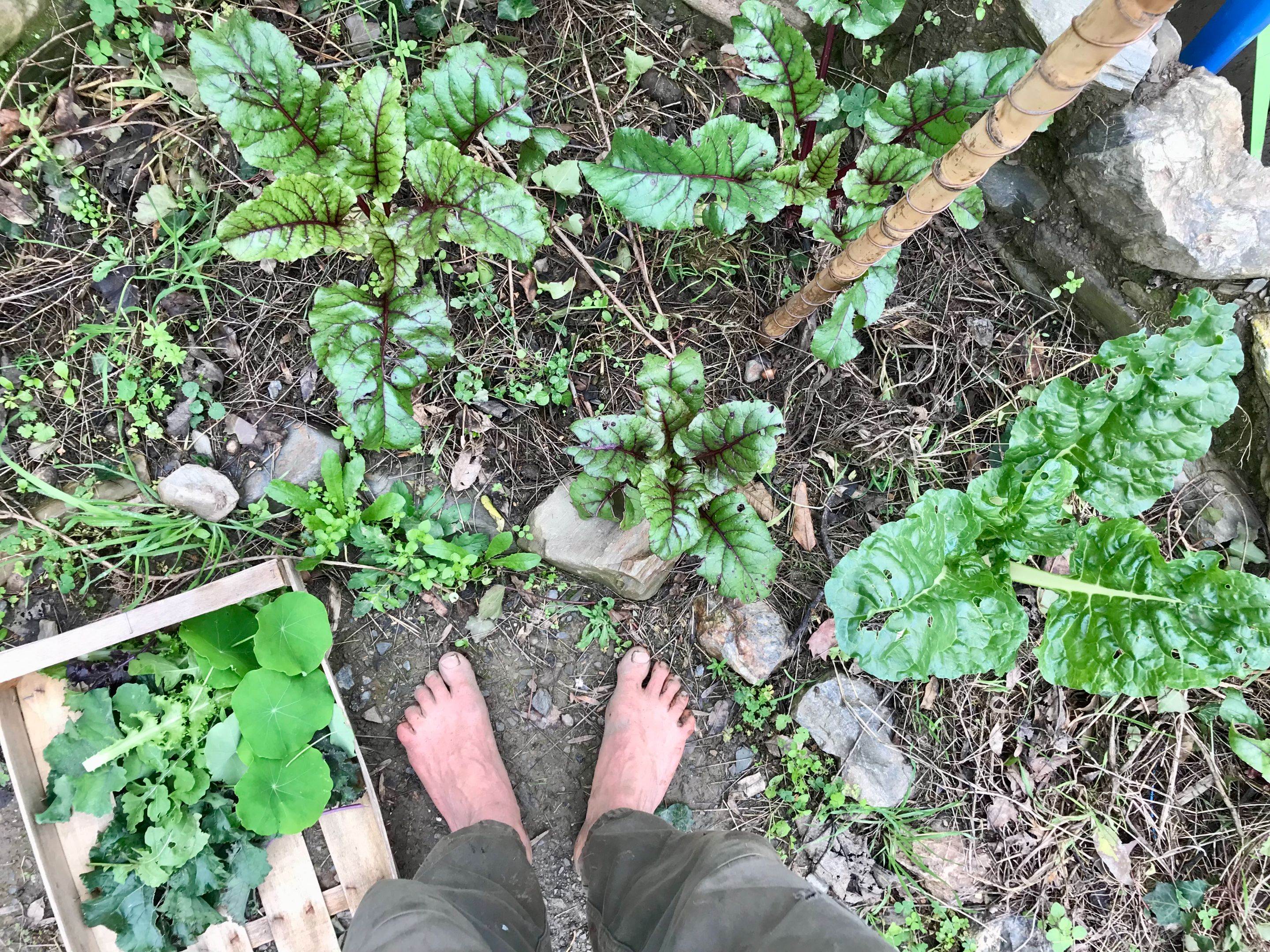
Everywhere i put an antenna, the growth around it booms. That's why it is preferable to make massive ones which cover a larger area.
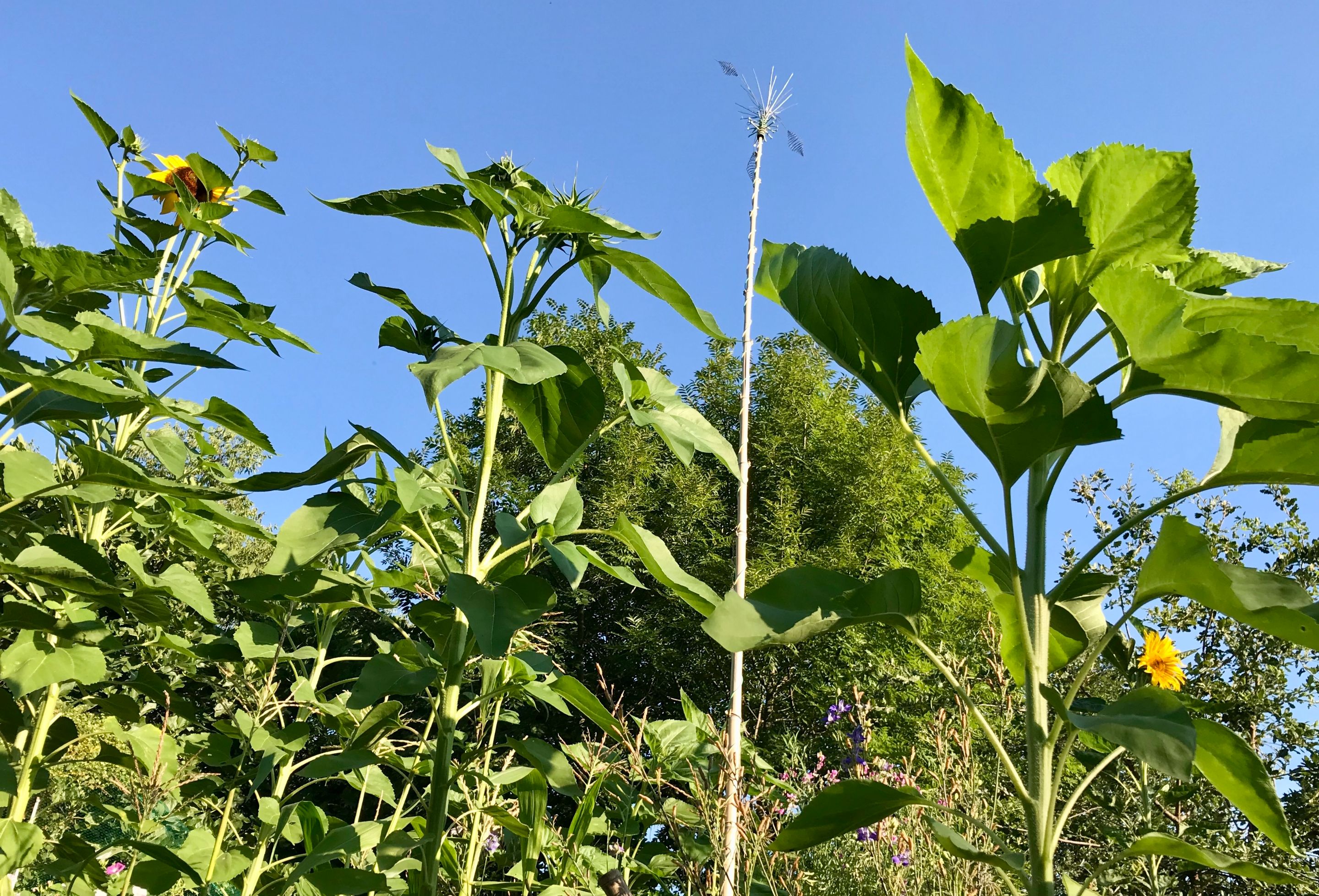
It is said the energised area can be calculated by drawing a circle around the base of the antenna using its height. So a 5M antenna creates a circle of energy around it with a diameter of 10M. I cannot personally testify to this but i can say with certainty that plants closer to the base of the antenna grow better than those further away.
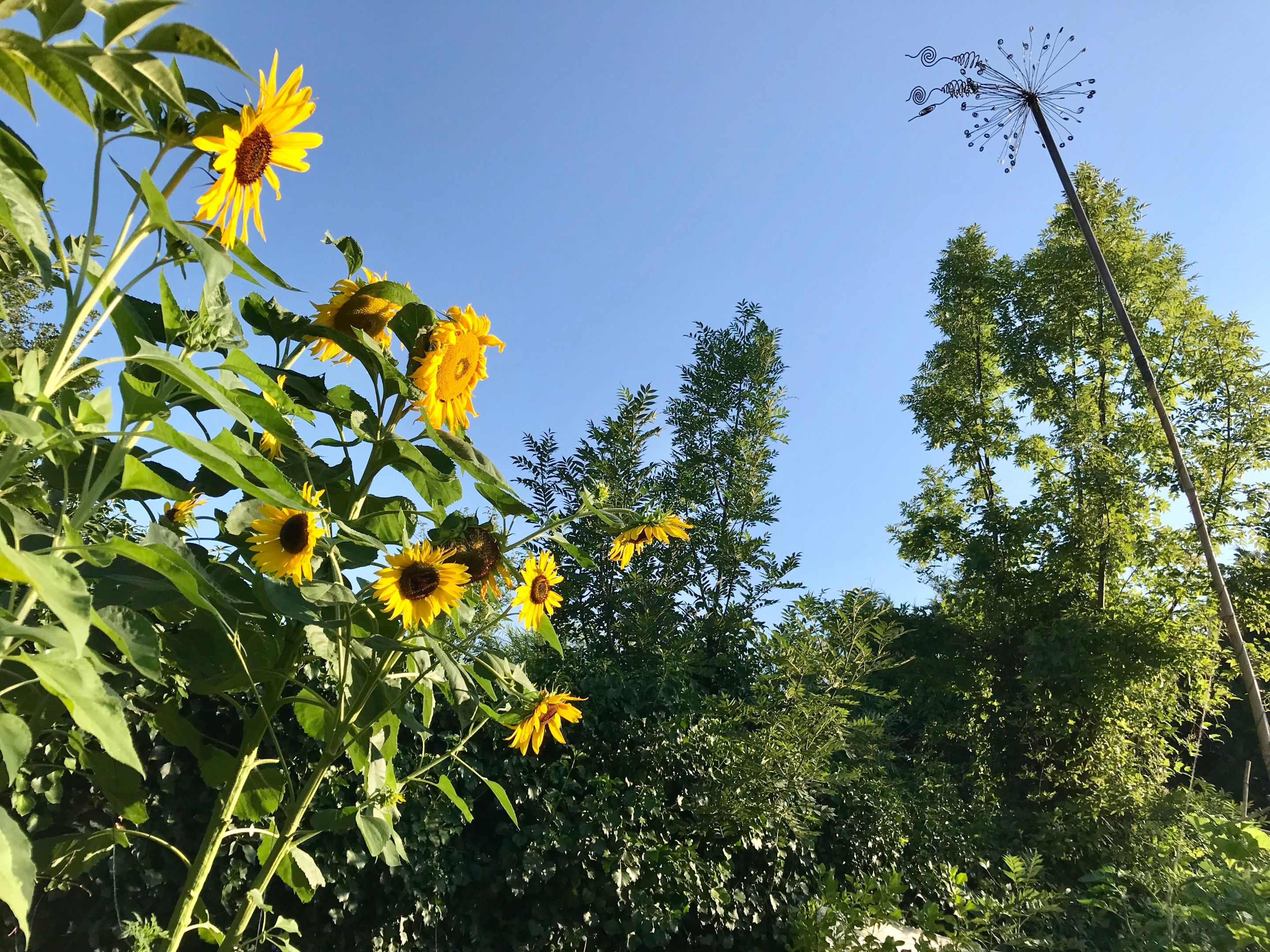
It becomes difficult to calculate what's going on when one has multiple antenna as i do, both big and small in the same space, mixed up with other types of antenna like pyramids, Irish round towers & Ighina spirals. Even the basalt in the soil is acting like a million little antenna, drawing energy towards each particle, encouraging those essential micro-organisms to thrive and create healthy living soil.
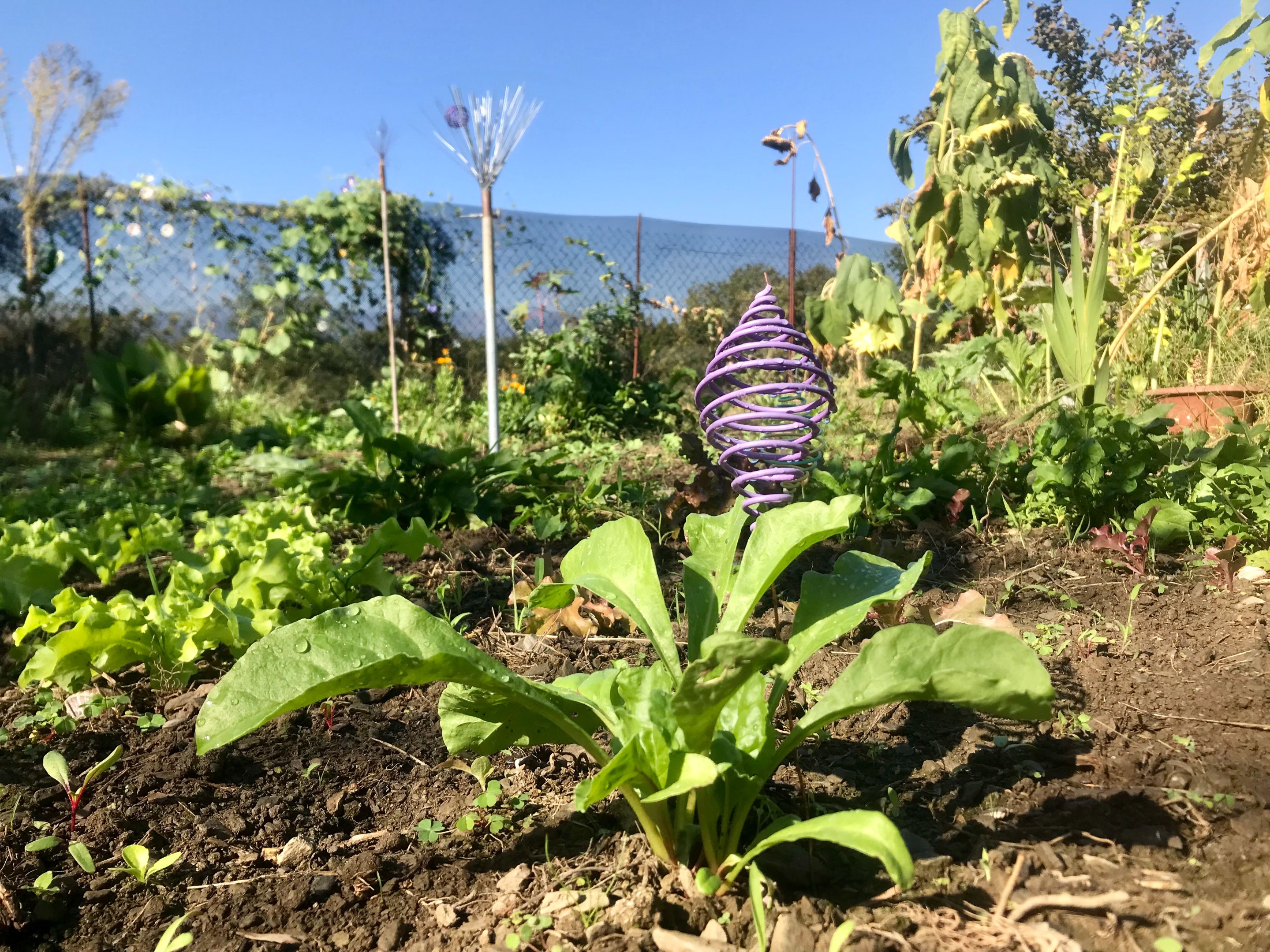
Last but not least don't forget that YOU are a very effective mobile antenna! Particularly when you take your shoes off. So the more time you spend walking barefoot around your land with loving thoughts, the more the plants will bloom, irrespective of other things you may or may not be doing to encourage growth.
Having spent more time this year on only two of our three pieces of land i can see clearly how the unloved land has not produced as well. I say this because the usual suspects like physalis, plantain, dandelions and sorrel simply didn't show up this year. At first i thought the garden must be lonely or jealous but these are very human terms, unknown to plants, so i have come to see now that our presence and intentions alone can serve as antenna and relatively sufficient 'fertilisers' of the soil.
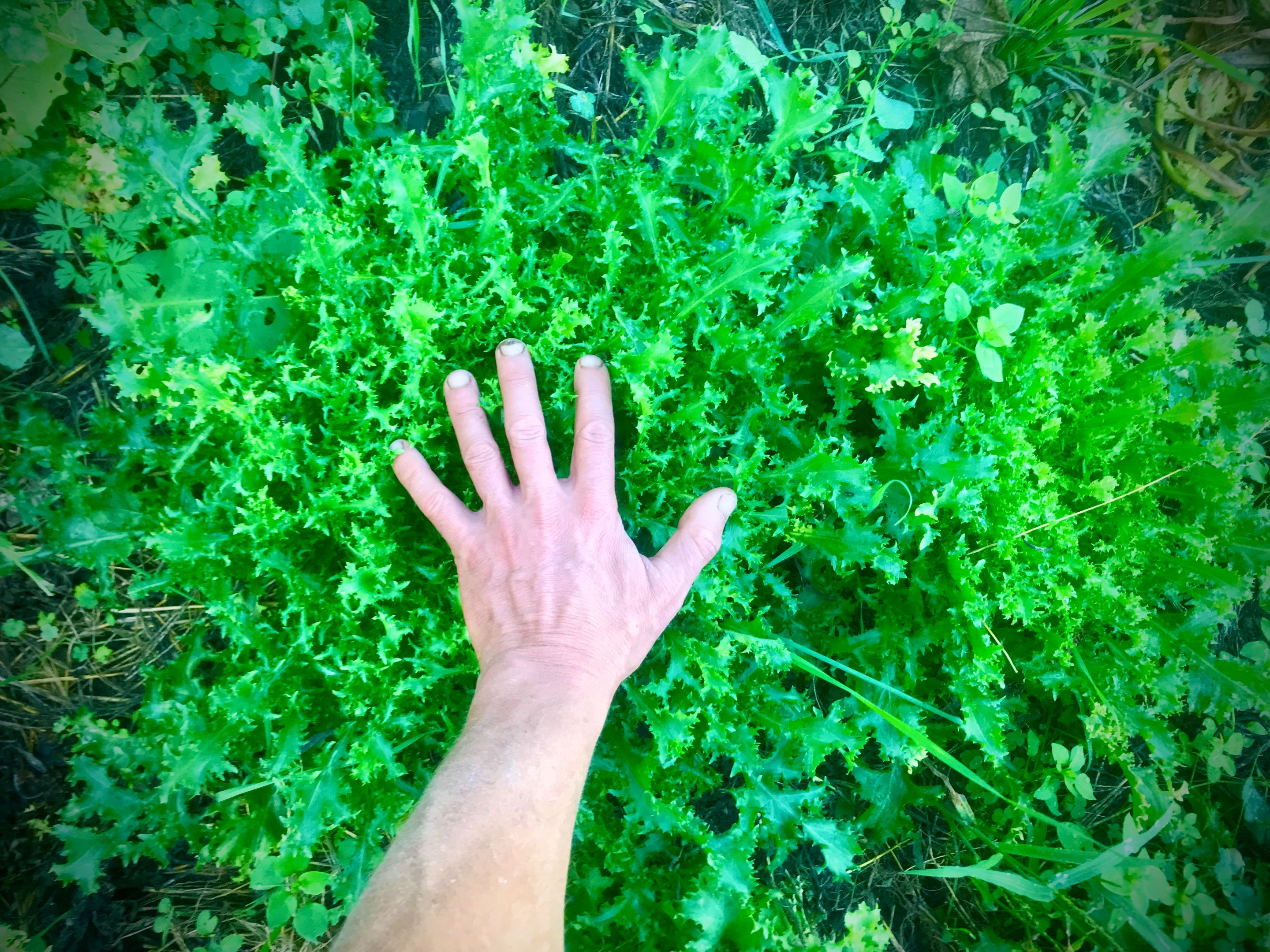
Final thoughts
Doris our allotment neighbour has always been very sceptical of electroculture, calling my plants monsters and freaks, which has been a bit of a test for me because she is an amazing 80 year old lady for whom i have a lot of respect. Indeed, she taught us everything we know about the Steiner biodynamic system over the last four years and i hoped to be able to repay her in some way by adding to her vast knowledge acquired over 40 years on this same land.
She happened to be passing when we were digging up the sweet potato and Sabrina encouraged her to come and have a look. She stood there for some time in silence, staring at the (monster?) shape in the ground and i feared the upcoming monologue about "pushing" nature too hard, but instead she calmly let me know that her four sweet potato plants produced a pathetic collection of tubers this year which are together no bigger than one of mine. "Yes" i told her, "sweet potatoes don't grow well here without electroculture".
I know this because i grew them for the first time the year before i discovered electroculture and remember feeling quite disappointed when i dug up the unimpressive tubers at the end because i had witness extensive growth above ground.
Doris nodded in agreement as she turned to leave and casually asked me what materials she would need to build an antenna. I smiled and told her not to worry about it. "It will be my pleasure to make you one for Christmas."
Can't tell you how great this makes me feel and it really will be my pleasure to craft something very particular for her.
As a final point i do want to mention that i had another sweet potato growing in the same garden, also within the radius of an antenna, but the growth was completely different, producing the usual small size we are accustomed to. So what gives? Well, there are always a plethora of factors at play, all of which must be considered. When i dug up the small sweet potato i noticed the soil was full of white stringy mycelium and felt very different to the soil around the big one. While this difference may appear minor some root vegetables don't like living with the mushrooms, so it actually does make a huge difference and leads me to an important and often overlooked point.
Electroculture is effective yes, but it won't work in all situations and it is not a 'quick fix' if you have underlying problems on your land. Much care and attention is still required to create the perfect growing environment for your plants with optimum soil, light and water.
I am very excited therefore to see how big next year's sweet potato will be when it is grown in this same spot, because this one will be planted not only with basalt powder but also with rich organic compost/fertiliser which has been 'cooking' since Spring.
Next's year's monster will make this one look like a baby!
In closing i have a vision i would like to share with you. We buy our baby sweet potato plants from a nursery producer in the valley and she will be interested to see a photograph of what her plants are capable of, perhaps never having seen this before. She will obviously enquire how i did it and i will tell her about my copper electroculture antenna and the website i will have at that time, from which you can buy your own. She will buy one and then tell other producers about it and this will be the birth of a new energy for us and ultimately another source of income.
Love & Light everyone 🌱
